Family: Tenthredinidae
Family common name: common sawflies
Subfamily: Nematinae
Tribe: Nematini
Genus: Pristiphora Latreille, 1810
Subgenera: unresolved
The Tenthredinidae are the most species-rich family and are found throughout the world, in all continents but Antarctica. They are known as the “common sawflies.” They can generally be recognized by a cylindrical body and long, segmented antennaeantenna:
the sensory organ emerging from the front of the head, usually between the compound eyes and above the clypeus; includes the flagellum, scape and pedicel
 . Otherwise, they come in a variety of colors, sizes, and forms (Goulet 1992Goulet 1992:
. Otherwise, they come in a variety of colors, sizes, and forms (Goulet 1992Goulet 1992:
Goulet H. 1992. The genera and subgenera of the sawflies of Canada and Alaska: Hymenoptera. Symphyta. The insects and arachnids of Canada. Part 20. Agriculture Canada Publication.).
Nematinae is the second-largest subfamily of Tenthredinidae, with over 1,250 species (Prous et al. 2014Prous et al. 2014:
Prous M, Blank SM, Goulet H, Heibo E, Liston A, Malm T, Nyman T, Schmidt S, Smith DR, Varing;rdal H, Viitasaari M, Vikberg V, and Taeger A. 2014. The genera of Nematinae (Hymenoptera, Tenthredinidae). Journal of Hymenoptera Research 40: 1-69. " target="_blank">https://doi.org/10.3897/JHR.40.7442). They are most diverse in northern Eurasia and North America; only a few species occur in the Southern Hemisphere. Nematinae sawflies have a variety of feeding habits including external leaf feeding, leaf mining, and gall forming, and feed on a variety of hosts (Smith 2003bSmith 2003b:
Smith DR. 2003b. A Synopsis of the sawflies (Hymenoptera: Symphyta) of America south of the United States: Tenthredinidae (Nematinae, Heterarthrinae, Tenthredininae). Transactions of the American Entomological Society 129 (1): 1-45.).
The Nematinae have been subject to numerous revisions in recent years. As of 2021, there are no comprehensive keys to many of the North American species of Nematinae (Prous et al. 2014Prous et al. 2014:
Prous M, Blank SM, Goulet H, Heibo E, Liston A, Malm T, Nyman T, Schmidt S, Smith DR, Varing;rdal H, Viitasaari M, Vikberg V, and Taeger A. 2014. The genera of Nematinae (Hymenoptera, Tenthredinidae). Journal of Hymenoptera Research 40: 1-69. " target="_blank">https://doi.org/10.3897/JHR.40.7442). Because of changing taxonomy and extreme variability in morphology, identifying genera and species in the Nematinae may be more challenging than in other subfamilies of Tenthredindae. For this reason, knowing the host or behaviors of a specimen can be extremely helpful for identification within this subfamily.
Pristiphora is an extremely species-rich genus with a widespread distribution. In recent years, several genera including Neopareophora, Nepionema, Melastola, and Pristola were collapsed into Pristiphora based on molecular phylogenetics. This makes the genus especially difficult to key based on morphology (Prous et al. 2014Prous et al. 2014:
Prous M, Blank SM, Goulet H, Heibo E, Liston A, Malm T, Nyman T, Schmidt S, Smith DR, Varing;rdal H, Viitasaari M, Vikberg V, and Taeger A. 2014. The genera of Nematinae (Hymenoptera, Tenthredinidae). Journal of Hymenoptera Research 40: 1-69. " target="_blank">https://doi.org/10.3897/JHR.40.7442, Prous et al. 2017Prous et al. 2017:
Prous M, Kramp K, Vikberg V, and Liston A. 2017. North-Western Palaearctic species of Pristiphora (Hymenoptera, Tenthredinidae). Journal of Hymenoptera Research 59: 1-190. https://doi.org/10.3897/jhr.59.12656).
Pristiphora are about 4–8 mm in length and have a variety of colors and forms (Smith 2003bSmith 2003b:
Smith DR. 2003b. A Synopsis of the sawflies (Hymenoptera: Symphyta) of America south of the United States: Tenthredinidae (Nematinae, Heterarthrinae, Tenthredininae). Transactions of the American Entomological Society 129 (1): 1-45.). The genus includes several pest species of economic importance (Smith and Middlekauff 1987Smith and Middlekauff 1987:
Smith DR and Middlekauff WW. 1987. Suborder Symphyta. In: Stehr FW ed. Immature Insects. Kendall/Hunt Publishing Company. Vol. 1: 754 pp.).
There are 221 described species worldwide. About 55 species occur in North America north of Mexico (Taeger et al. 2018Taeger et al. 2018:
Taeger A, Liston AD, Prous M, Groll EK, Gehroldt T, and Blank SM. 2018. ECatSymmdash;Electronic World Catalog of Symphyta (Insecta, Hymenoptera). Program version 5.0 (19 Dec 2018), data version 40 (23 Sep 2018). Senckenberg Deutsches Entomologisches Institut (SDEI), Muuml;ncheberg. https://sdei.de/ecatsym/ Accessed: 28 Jan 2020.).
Subfamily characters
 cellcell:
cellcell: 1M slightly constricted apically; veins M and 1m-cu convergent toward the stigmastigma:
1M slightly constricted apically; veins M and 1m-cu convergent toward the stigmastigma: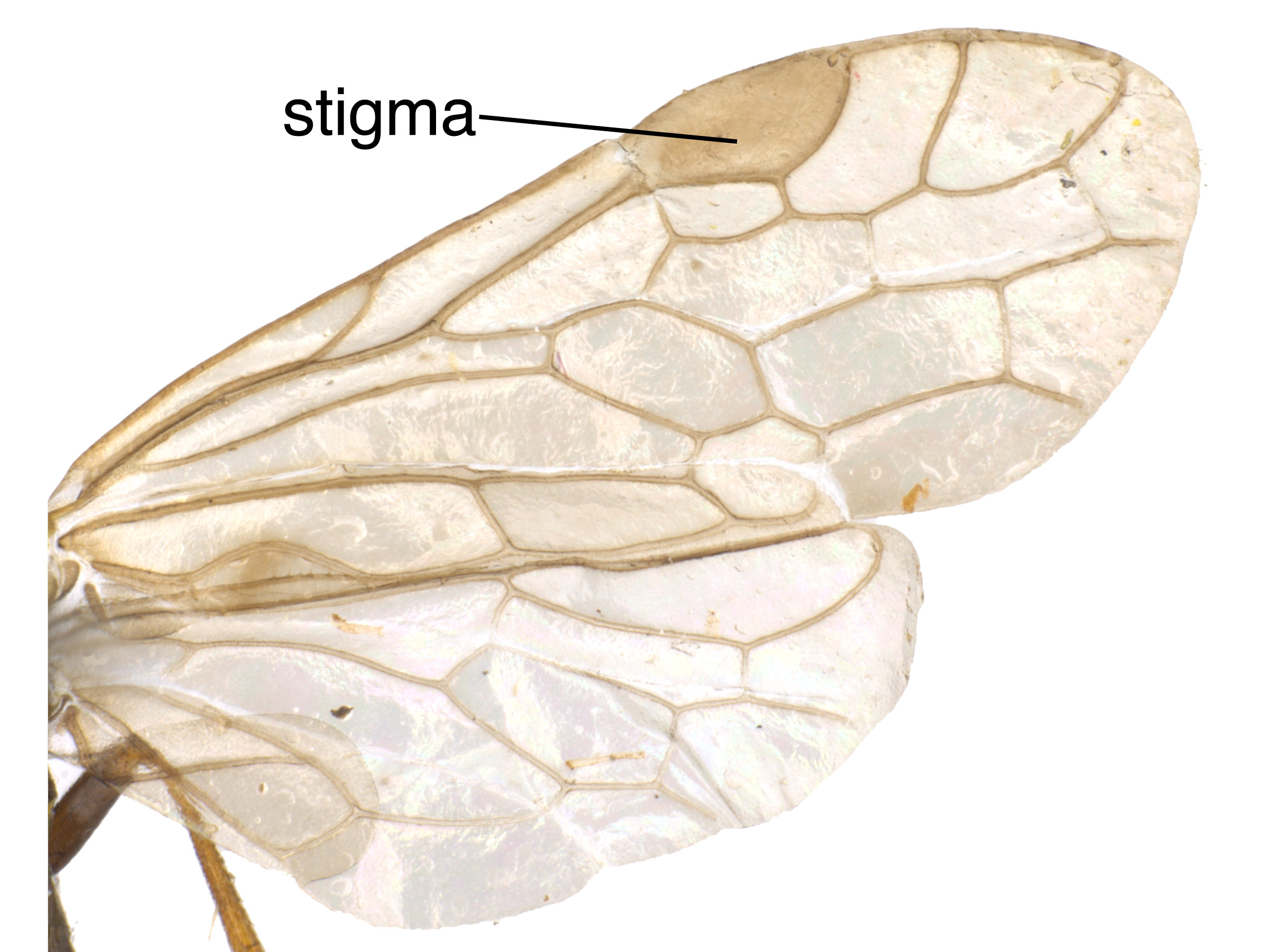 (Goulet 1992Goulet 1992:
(Goulet 1992Goulet 1992:Genus characters
There are several forms represented in Pristiphora, so some characters only apply to some species:
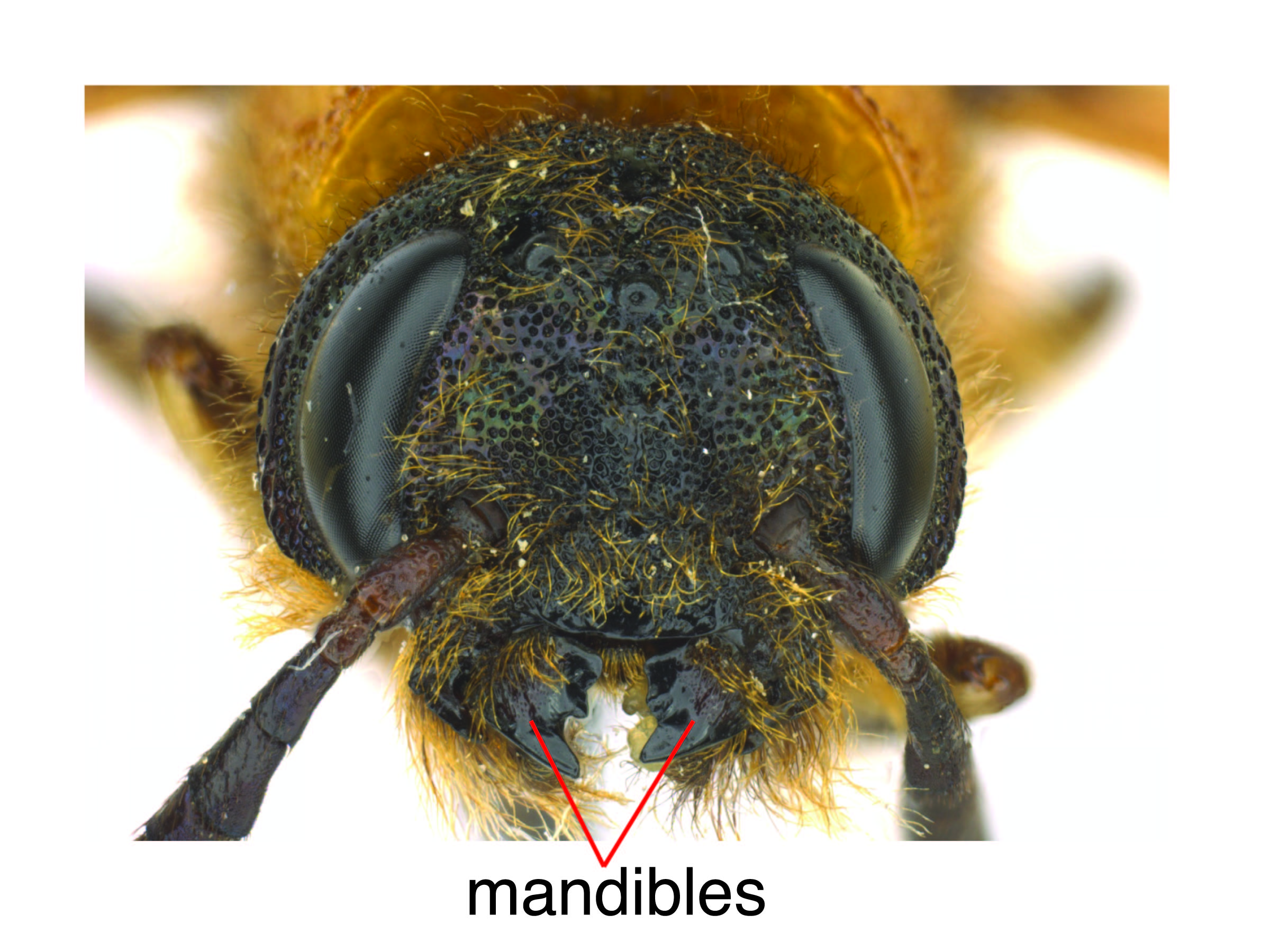 markedly constricted near middle (Prous et al. 2014Prous et al. 2014:
markedly constricted near middle (Prous et al. 2014Prous et al. 2014: margin usually truncatetruncate:
margin usually truncatetruncate: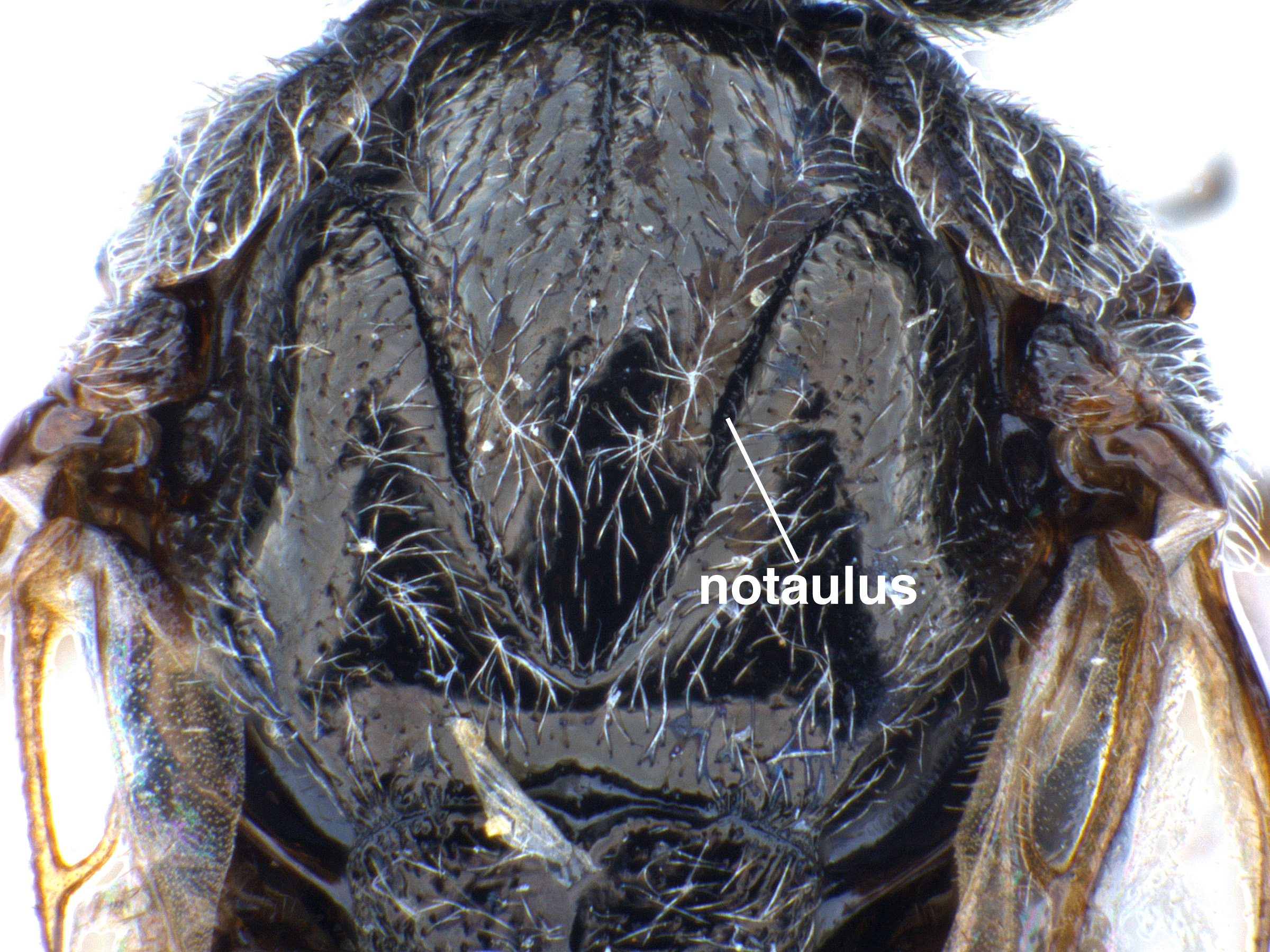 usually clearly outlined (Prous et al. 2014Prous et al. 2014:
usually clearly outlined (Prous et al. 2014Prous et al. 2014: cellcell:
cellcell: 1M slightly constricted apically; veins M and 1m-cu convergent toward the stigmastigma:
1M slightly constricted apically; veins M and 1m-cu convergent toward the stigmastigma: (Goulet 1992Goulet 1992:
(Goulet 1992Goulet 1992: veins M and Rs+M relatively widely separated on veinvein:
veins M and Rs+M relatively widely separated on veinvein: R (Goulet 1992Goulet 1992:
R (Goulet 1992Goulet 1992: vein 2A+3A incomplete and straight (Prous et al. 2014Prous et al. 2014:
vein 2A+3A incomplete and straight (Prous et al. 2014Prous et al. 2014: vein C swollen apically, such that cellcell:
vein C swollen apically, such that cellcell: C is only about half as wide as veinvein:
C is only about half as wide as veinvein: C at level of intersection of Rs+M and R (Goulet 1992Goulet 1992:
C at level of intersection of Rs+M and R (Goulet 1992Goulet 1992: vein 2r-m present (Prous et al. 2014Prous et al. 2014:
vein 2r-m present (Prous et al. 2014Prous et al. 2014: vein 2A usually meeting 1A; basalbasal:
vein 2A usually meeting 1A; basalbasal: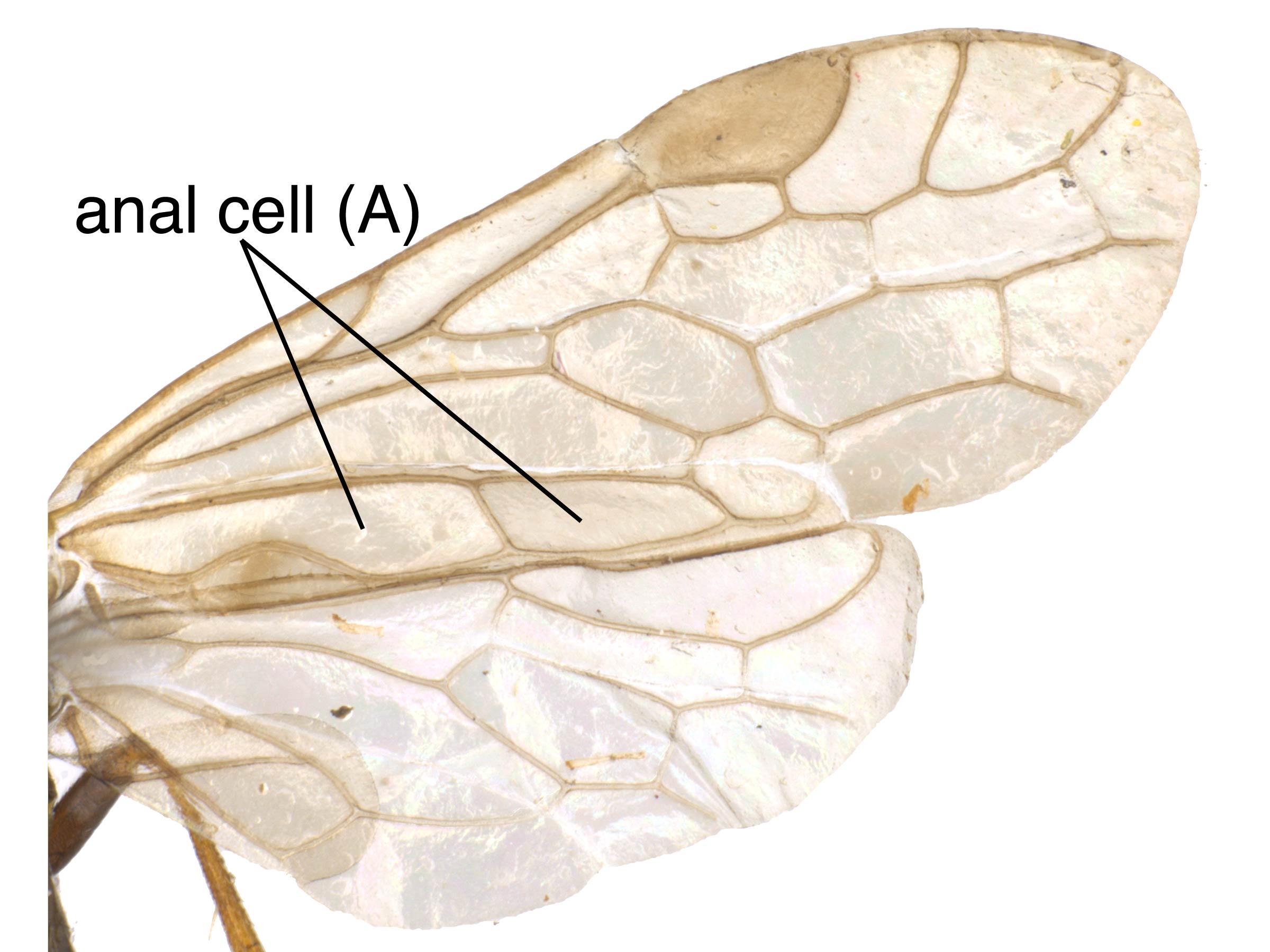 usually present (Prous et al. 2014Prous et al. 2014:
usually present (Prous et al. 2014Prous et al. 2014:Pristiphora has several shared morphological characters with Euura and Nematus, and in some cases cannot be easily distinguished. Together, these three genera can usually be distinguished from other Nematinae by the lack of fore wingfore wing:
the anterior wing of each pair of wings; usually the largest wing of the pair
 vein 2r-rs, incomplete veinvein:
vein 2r-rs, incomplete veinvein:
a tube-like, often darkened, structure on the wings
 2A+3A, and asymmetrical outer surfaces of the mandibles. Pristiphora can usually be distinguished from Euura and Nematus by the apically emarginateemarginate:
2A+3A, and asymmetrical outer surfaces of the mandibles. Pristiphora can usually be distinguished from Euura and Nematus by the apically emarginateemarginate:
notched at the margin
ovipositor sheathsheath:
structure that encloses the ovipositor, emerging from apex of the abdomen
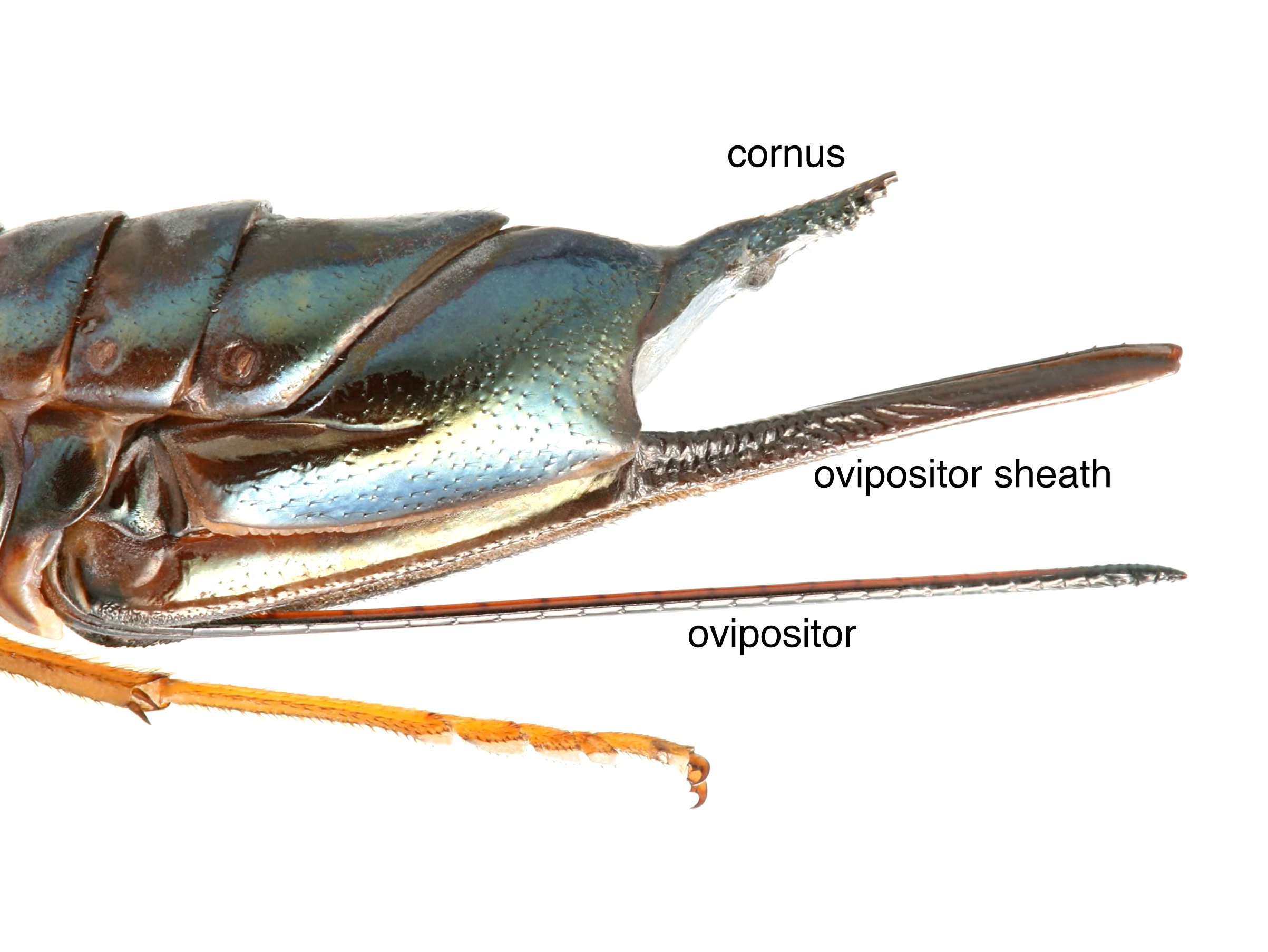 , short inner tooth of the tarsal clawtarsal claw:
, short inner tooth of the tarsal clawtarsal claw:
sharpened appendage emerging from the apex of the tarsus
 (or tarsal clawtarsal claw:
(or tarsal clawtarsal claw:
sharpened appendage emerging from the apex of the tarsus
 simple), apically truncatetruncate:
simple), apically truncatetruncate:
ending abruptly; cut off squarely; opposite of tapering
clypeusclypeus:
sclerotized area on the front of the head located between the antennal insertions and labrum
 (or clypeusclypeus:
(or clypeusclypeus:
sclerotized area on the front of the head located between the antennal insertions and labrum
 very shallowly emarginateemarginate:
very shallowly emarginateemarginate:
notched at the margin
), and apically enlarged fore wingfore wing:
the anterior wing of each pair of wings; usually the largest wing of the pair
 vein C (Prous et al. 2014Prous et al. 2014:
vein C (Prous et al. 2014Prous et al. 2014:
Prous M, Blank SM, Goulet H, Heibo E, Liston A, Malm T, Nyman T, Schmidt S, Smith DR, Varing;rdal H, Viitasaari M, Vikberg V, and Taeger A. 2014. The genera of Nematinae (Hymenoptera, Tenthredinidae). Journal of Hymenoptera Research 40: 1-69. " target="_blank">https://doi.org/10.3897/JHR.40.7442). Some species of Pristiphora have fore wingfore wing:
the anterior wing of each pair of wings; usually the largest wing of the pair
 vein 2r-rs present, while others lack a basalbasal:
vein 2r-rs present, while others lack a basalbasal:
towards the base; closest to the body
anal cellanal cell:
cell A of either the fore wing or hind wing
 on the hind winghind wing:
on the hind winghind wing:
the posterior wing of each pair of wings
 ; the latter species can be distinguished from other similar genera by the diagnostic characters listed above.
; the latter species can be distinguished from other similar genera by the diagnostic characters listed above.
Pristiphora abietina, the little spruce sawfly, has been recorded causing defoliation in huge infestations on spruce in Central Europe. Because the larvaelarva:
the immature stage of holometabolous insects
 feed only on new growth, the trees are not fully defoliated and therefore do not die, so the insect is arguably not a significant pest even when present in high abundance (Holusa and Drápela 2003).
feed only on new growth, the trees are not fully defoliated and therefore do not die, so the insect is arguably not a significant pest even when present in high abundance (Holusa and Drápela 2003).
Pristiphora erichsonii is a native pest of western larch and tamarack that has been recorded causing extensive damage, and sometimes death, in these important forestry trees. The female oviposits into new shoots, usually depositing dozens of eggs in a single site. The larvaelarva:
the immature stage of holometabolous insects
 feed gregariously on the needles until maturity when they drop to the soil and form cocoons in moist peat. Pristiphora erichsonii is univoltineunivoltine:
feed gregariously on the needles until maturity when they drop to the soil and form cocoons in moist peat. Pristiphora erichsonii is univoltineunivoltine:
describing an insect with a life cycle of one generation per year
(Turnock 1960Turnock 1960:
Turnock WJ. 1960. Ecological life-history of the larch sawfly, Pristiphora erichsonii (Htg.) (Hymenoptera: Tenthredinidae), in Manitoba and Saskatchewan. The Canadian Entomologist 92: 500-516.).
There are several Pristiphora pests introduced from Europe. Pristiphora abbreviata, commonly known as the California pear sawfly, occasionally causes significant damage to pear trees (Smith 1967dSmith 1967d:
Smith DR. 1967d. Two sawflies new to North America (Hymenoptera: Tenthredinidae). Proceedings of the Washington Entomological Society 69(1): 95.). Pristiphora geniculata is a pest of mountain ash known as the mountain ash sawfly. It has caused severe defoliation of its host, which is used as a forestry regeneration plant. The introduced parasite Olesicampe geniculatae has been an effective biocontrol agent of this pest in Canada (Quednau 1990Quednau 1990:
Quednau FW. 1990. Introduction, permanent establishment, and dispersal in eastern Canada of Olesicampe geniculatae Quednau and Lim (Hymenoptera: Ichneumonidae), an important biological control agent of the mountain ash sawfly, Pristiphora geniculata (Hartig) (Hymenoptera: Tenthredinidae). The Canadian Entomologist 122 (5): 921-934.). Pristiphora appendiculata, the black currant sawfly, is a pest of cultivated currants (Zinovjev and Smith 2000bZinovjev and Smith 2000b:
Zinovjev AG and Smith DR. 2000b. Sawflies (Hymenoptera: Tenthredinidae) described by Benjamin D. Walsh, with notes on their hosts and biology. Proceedings of the Entomological Society of Washington 102 (4): 974-990.), and Pristiphora rufipes, the columbine sawfly, is a pest of columbine plants (Smith 2013Smith 2013:
Smith DR. 2013. The columbine sawfly, Pristiphora rufipes Serville, new to Virginia, and other additions to the list of Virginia sawflies (Hymenoptera: Tenthredinidae). Banisteria 41: 98-99.).
In North America, Pristiphora feeds on a variety of hosts, including species of Betula (birch), Vaccinium (blueberry), Salix (willow), Quercus (oak), Ribes (currant, gooseberry), Rubus (raspberry), Prunus (cherry, plum, pear), Rosa (rose), Sorbus (mountain ash), Aquilegia (columbine), and Larix (larch) (Quednau 1990Quednau 1990:
Quednau FW. 1990. Introduction, permanent establishment, and dispersal in eastern Canada of Olesicampe geniculatae Quednau and Lim (Hymenoptera: Ichneumonidae), an important biological control agent of the mountain ash sawfly, Pristiphora geniculata (Hartig) (Hymenoptera: Tenthredinidae). The Canadian Entomologist 122 (5): 921-934., Goulet 1992Goulet 1992:
Goulet H. 1992. The genera and subgenera of the sawflies of Canada and Alaska: Hymenoptera. Symphyta. The insects and arachnids of Canada. Part 20. Agriculture Canada Publication., Smith 2003bSmith 2003b:
Smith DR. 2003b. A Synopsis of the sawflies (Hymenoptera: Symphyta) of America south of the United States: Tenthredinidae (Nematinae, Heterarthrinae, Tenthredininae). Transactions of the American Entomological Society 129 (1): 1-45.).
Life histories are varied in the genus Pristiphora, but they are generally solitary external leaf feeders (Smith and Middlekauff 1987Smith and Middlekauff 1987:
Smith DR and Middlekauff WW. 1987. Suborder Symphyta. In: Stehr FW ed. Immature Insects. Kendall/Hunt Publishing Company. Vol. 1: 754 pp.). LarvaeLarva:
the immature stage of holometabolous insects
 of some species (e.g. P. erichsonii) are gregariousgregarious:
of some species (e.g. P. erichsonii) are gregariousgregarious:
describing insects in large groups or aggregations
, and can cause notable defoliation.
World: The genus is known from North America, throughout Europe, and in western Asia and East Asia (Togashi and Tano 1987Togashi and Tano 1987:
Togashi I and Tano T. 1987. Some Korean sawflies (Hymenoptera, Symphyta), with descriptions of the female of Nesoselandria koreana and a new species of Pristiphora . Kontyucirc; 55 (4):639-643., GBIF), Malaysian Borneo (Haris 2006Haris 2006:
Haris A. 2006. Study on the Palaearctic Pristiphora species (Hymenoptera: Tenthredinidae). Natura Somogyiensis 9: 201-277.), Colombia, Venezuela, and Brazil (Smith 2003bSmith 2003b:
Smith DR. 2003b. A Synopsis of the sawflies (Hymenoptera: Symphyta) of America south of the United States: Tenthredinidae (Nematinae, Heterarthrinae, Tenthredininae). Transactions of the American Entomological Society 129 (1): 1-45.).
North America: Pristiphora occurs throughout the United States and Canada north into Alaska, Yukon, the Northwest Territories, and Nunavut (Prous et al. 2017Prous et al. 2017:
Prous M, Kramp K, Vikberg V, and Liston A. 2017. North-Western Palaearctic species of Pristiphora (Hymenoptera, Tenthredinidae). Journal of Hymenoptera Research 59: 1-190. https://doi.org/10.3897/jhr.59.12656, GBIF). Several species are known from Mexico and Costacosta:
the robust vein on the anterior margin of the wing; vein C
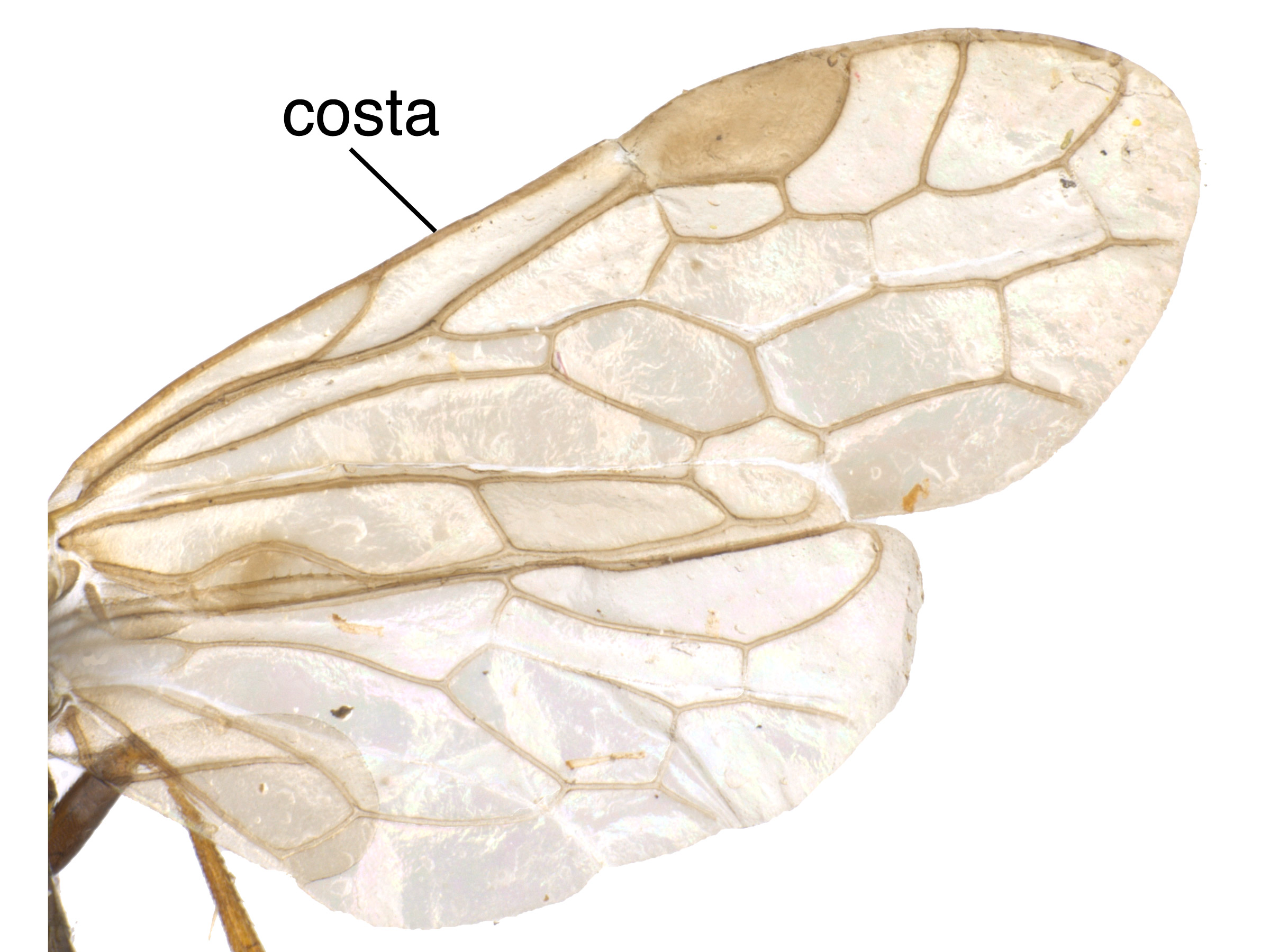 Rica (Smith 2003bSmith 2003b:
Rica (Smith 2003bSmith 2003b:
Smith DR. 2003b. A Synopsis of the sawflies (Hymenoptera: Symphyta) of America south of the United States: Tenthredinidae (Nematinae, Heterarthrinae, Tenthredininae). Transactions of the American Entomological Society 129 (1): 1-45.). There are several species introduced from Europe in the early twentieth century that have since become established (see Life history topic for details on these species).
Map data from: GBIF.org (29 October 2019) GBIF Occurrence Download Pristiphora
Details about data used for maps can be found here.